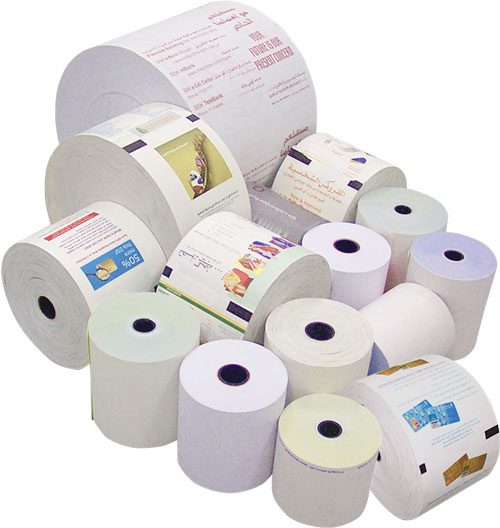How to Check the Quality of Thermal Paper

When it comes to printing receipts, labels, or tickets, thermal paper is an essential component in many businesses. However, not all thermal paper is created equal. Ensuring that the thermal paper you use is of high quality can significantly affect print clarity, longevity, and the overall performance of your printing equipment. After reading this article, you will know what factors to pay attention to when estimating the quality of thermal paper.
Understanding Thermal Paper
Let us first explain what thermal paper is, before we get into the quality control measures. Thermal paper has a heat-sensitive coating that changes color when heated. Thermal Imaging Printers can create an image or text without ink or ribbon as the printing process is carried out without the need for such materials.

Key Quality Indicators of Thermal Paper
Brightness and Whiteness
Importance: The print clarity of thermal paper is affected by its brightness and whiteness. The bright white surface of high-quality paper creates contrast and makes reading the text easier.
How to Check: Check samples against a bright white standard sheet or use a brightness meter. Seek out papers that comply with ISO 2470-1.Smoothness of the surface.
Important: A smooth surface promotes clearer prints and improved ink adherence. Rough surfaces may result in printer jams and poor print quality.
How to Check: Touch the surface with your fingers. A high-quality thermal paper should have a uniform smooth texture. To check how well the paper prints you can also perform a print test.
Coating Quality
Importance: When heat is applied the thermal coating is what enables the paper to create an image. A high-quality coating will guarantee that the paper responds appropriately in a variety of scenarios.
How to Check: Check for Dark Spots and Blemishes: Look for a uniform coating. By using a thermal printer and examining the prints consistency you can conduct a thermal sensitivity test.Heat Sensitivity
Important: Superior thermal paper ought to possess a particular heat sensitivity that enables it to react appropriately without deteriorating over time. The longevity and clarity of prints can be affected by sensitivity levels that are too high or too low.
How to Check: Examine the specs provided by the manufacturer and test the paper in a range of temperature conditions to gauge its performance.
Durability and Longevity
Importance: Heat light and some chemicals can cause thermal prints to fade over time. High-quality thermal paper should not fade or degrade.
How to Check: Perform a longevity test by exposing prints to different environmental conditions. Additionally, consider the manufacturer's claims about fade resistance and longevity.Thickness and Weight
Importance: Thermal papers overall durability and ability to pass through printers are influenced by its thickness. In general, a thicker paper is more durable.
How to Check: Compare the weight and thickness with industry standards. Most thermal papers will have a weight of around 48 to 60 grams per square meter (gsm).Recyclability and Environmental Impact
Importance: As companies grow more environmentally aware thermal paper’s ability to be recycled has grown in importance. High-quality thermal paper should be recyclable and free of dangerous chemicals like BPA.
How to Check: Verify the manufacturer's claims about the paper’s composition and check for any environmental certifications.
Testing Your Thermal Paper
To ensure that you are selecting the best thermal paper for your needs, consider the following testing methods:
- Print Test: Use your printer to create various prints and assess clarity, sharpness, and the overall quality of the output.
- Exposure Test: Keep printed samples in different environments (like sunlight or near heat sources) and observe any changes over time.
- Compatibility Test: Check if the paper works seamlessly with your thermal printer model without causing jams or errors.
Conclusion
Selecting high-quality thermal paper is crucial for ensuring optimal performance in your printing operations. By focusing on brightness, surface smoothness, coating quality, heat sensitivity, durability, thickness, and environmental considerations, you can make an informed decision that enhances your business's efficiency and professionalism.
At Top Roll Paper, we pride ourselves on delivering only the highest quality thermal paper products. Our rigorous quality checks and commitment to excellence ensure that our thermal paper meets the highest standards in the industry. Whether you need thermal rolls for receipts, labels, or tickets, you can trust Top Roll Paper for products that perform reliably and consistently. Make the smart choice for your business and experience the Top Roll Paper difference today!



